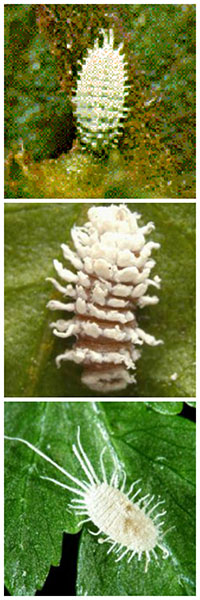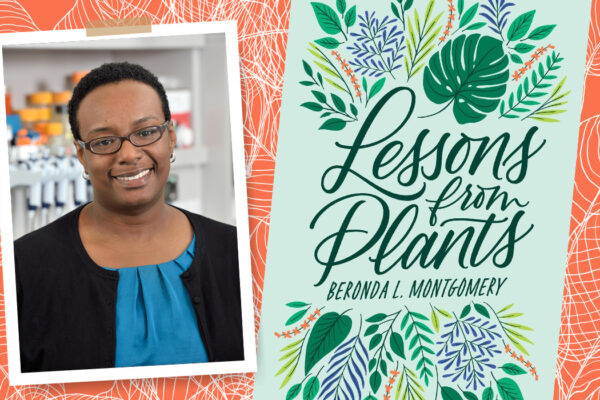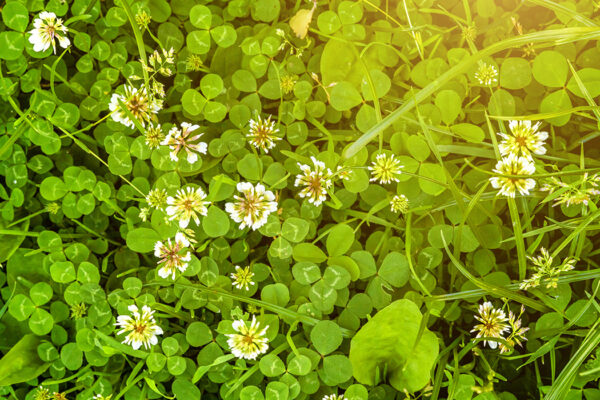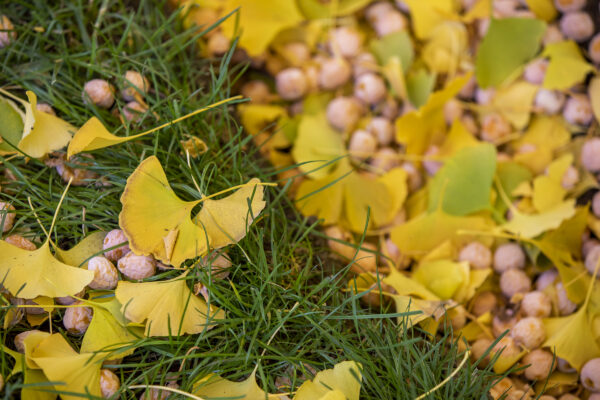
Mike Dyer began his career working as a horticulturist for North Carolina’s agricultural extension. Horticulture is the art and science of growing vegetables, but there is not a vegetable to be seen in the greenhouses and growth chambers he supervises. Instead, he oversees the health of a variety of oddball plants, many of them “weeds.”
Upstairs from the greenhouses behind Rebstock Hall on the campus of Washington University in St. Louis, more than 20 walk-in growth chambers are stuffed with Arabidopsis thaliana, a scrawny plant often found on gravel shoulders. Among the plants in the greenhouses are white clover, which lawn services consider a weed; erect knotweed, which is a weed; and barnyard grass, a universally loathed tough grass with flat stems.
Google any of these plants and there are instructions for killing them, but Dyer exercises considerable skill to not only keep them alive, but flourishing.
That’s because it’s his job to nurture any plant a plant biologist brings to him, and the scientists choose their plants for their ability to produce science rather than tomatoes and peas.
So you can learn a great deal about plant research at Washington Universit touring the greenhouses with Dyer.
The white clover, for example, was brought in by Ken Olsen, PhD, associate professor of biology in Arts & Sciences, who studies population-level variations in its cyanide production. He is also the owner of the forlorn pot of barnyard grass.
“Ken wants someone to work on this plant,” Dyer said, “but so far nobody has signed on. There’s not enough baseline. All the graduate students throw up their hands and say ‘I want to graduate within my lifetime.’ ”
The knotweed, a plant that produces stalks of itty-bitty seeds, belongs to Natalie Mueller, a graduate student in anthropology in Arts & Sciences, who is studying its domestication. “She’s chewed on a few of its seeds,” Dyer said, “but I call it hungry food. You’d eat it only if you are very hungry.”
Plant whisperer
“We have a small group and we divide up the work,” Dyer said. “I do all the Arabidopsis growing; Darlene Branson does most of the clover; and fellow greenhouse assistant Jeanne Cablish does the little Eisendraft garden outside.”
A good greenhouse keeper, he said, has a global awareness of the environment in the greenhouses and, above all, of the demeanor of the plants. “Sometimes people ask me what I’m going to do today,” he said. “I say, ‘I don’t know; I haven’t talked to them yet.’ ”
Meaning he hasn’t talked to the plants.
You could say Dyer is a plant doctor, with the same insight and empathy for plants that a good general practitioner has for patients. Empathizing with a plant can require imagination. “If someone comes in with something a little oddball, I ask them where it came from. What’s its natural environment? And then I go from there.”

One of Dyer’s innovations has been to introduce biological controls for insect infestations in the greenhouse. “You always have pests,” he said.
“The first line of defense is cultural,” he said, meaning pruning old or dead leaves, discarding diseased plants and keeping the greenhouse clean.
Biological controls are the second line of defense. “For your standard Mexican mealy bug (pictured above top),” he said, “there is a beetle called Cryptolaemus (middle), whose immature life stage, coincidentally, looks like a giant mealy bug. But it roams around and eats the mealy bug egg masses, and it will clean up a crop for you in a few weeks time.”
But Cryptolaemus is effective only because it can attack egg masses, Dyer said. The long-tailed mealy bug (bottom), in contrast, is mobile and lays live young. When it was accidentally introduced into the greenhouse, Dyer had to move to a third line of defense, a chemical that is an insect growth regulator.
Dyer can recount many such stories of miniature battles in the garden and the greenhouse. Nature is red in tooth and claw not just above, but also below, ground.
“Once, a student brought in wild Amazonian rice. I asked myself how was I going to grow that? I imagined it growing on the banks of a river, so we put it in pots and put the pots in tubs and put aquarium bubblers in the tubs to aerate the water.
“That rice got to be 10 feet tall,” he said. “It was really pretty crazy stuff.”
Sometimes, the only way to solve a horticultural mystery is to look at it from a plant’s point of view.
Another time, an experimental protocol required plants to transition from short days to long days (in a computer-controlled growth chamber).
“That really stresses a plant,” Dyer said. “I half expected the plants to produce lots of anthocyanins and turn purple. But the protocol also specified the temperature drop when the plants moved to the long day. So I thought maybe that will help them withstand the stress.”
It didn’t.
So Dyer started asking questions. In the original experiment, the plants were kept in the same chamber throughout the experiment, but in the university greenhouse replication they were moved from a short-day chamber to a long-day chamber, and the light level in the long-day chamber was set to match that the level in the short-day chamber.
Dyer realized this was the problem.
Why? In the original experiment, the light level dropped when the temperature dropped, because the light output of fluorescent bulbs is lower at colder temperatures. To match the original conditions, they would need to drop the light level as well as the temperature when they moved the plants to the long-day chamber.
Once they did this, the plants were fine, Dyer said.
That is subtle enough to be the crux of an Agatha Christie mystery if you could just figure out how to make a plot turn on high light levels.
A laboratory, not a garden
Talking to Dyer, you realize that the greenhouse is not a garden like your backyard vegetable garden — and not even a nursery like the ones that sell annuals — but something much more akin to a laboratory.
One tipoff is the soil. “We grow in artificial mixes that are all peat, vermiculite, perlite, wood bark and that kind of thing,” he said. “So we have to add all the nutrients a plant needs.”
Why do this? “The soil is essentially sterile,” Dyer said, “so we can control its composition and we can achieve uniformity. “
Once it is understood that the soil is akin to culture medium and the greenhouse is akin to a laboratory, things fall into place. On a warm day in the fall, there are no insects in the greenhouse, for example, except for the leaf cutter bees in a cage over the clover. They have been brought in to pollinate the clover so that it will set seed for a graduate student’s experiment.
But otherwise the greenhouse is surprisingly quiet, at least compared to outside gardens. There are no faint buzzes, clicks and hums because there are very few insects going about their small business.
“We put out ladybugs once a week,” he said. “They are background predators. They’ll eat anything they can catch: aphids, thrips, immature mealy bugs, mites, spider mites, they’ll eat them all.”
The bees are caged and the mites are missing because some greenhouse experiments require near-hospital cleanliness: Scott Mangan’s, for example. Mangan, PhD, assistant professor of biology in Arts & Sciences, is trying to figure out whether microbes in the soil influence which plants grow where.
“Scott and his students start with a big bag of sterile soil, sterilized pots, and seedlings of 18 species of tallgrass prairie plants,” Dyer said. “They first grow seedlings in the sterile soil with a small quantity of live soil collected from the field. Each plant species promotes the growth of characteristic group of organisms within the soil. The soil then becomes their inoculum, which they add to other plots into which they plant other species or the same species of prairie plant.”
“It’s a giant experiment,” Dyer said. “There are more than 2,000 pots and when you water, you can’t splash from pot to pot because you might inadvertently transfer organisms. So it’s dribble, dribble, dribble, pause, dribble, dribble, dribble, pot by pot.”
“Scott wants the graduate students to know what it takes to run a successful experiment,” he said, “so they’re doing the watering.”
And after gardening? More gardening
Twenty-five years is a long time to work at one place, but Dyer said this job is ever-changing: there are always new challenges, new plants, new technology and new people.
And, yes, he does have a vegetable garden at home. Actually three plots so that he can rotate crops. In mid-September, he said, he had “butter beans growing. I still have some carrots, tomatoes, cabbage, got broccoli started, collards, some tomatillos still, maybe, a few peppers left.
“I like to grow staples like potatoes, carrots, garlic and onions,” he said. “If you throw in a few tomatoes and herbs, you’ve got yourself something to eat. People should know how to produce their own food.”


